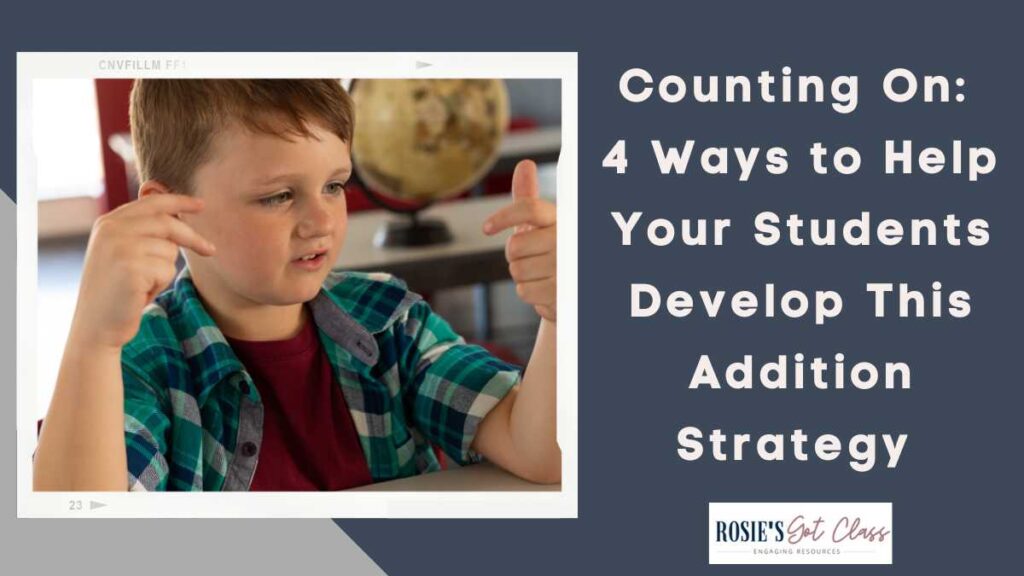
Counting on is an essential math skill for addition In first and second grade. One highly effective strategy to help young learners strengthen their addition skills is the counting on addition strategy. This technique allows students to add numbers by starting with the larger number and then “counting on” from there which makes addition faster and more efficient. Let’s explore the counting on strategy, why it’s essential for students to understand, and how you can teach it through various methods using manipulatives, models, and practice.
One way you can practice the counting on addition strategy is with a fun classroom transformation. This zoo themed activity will help your students practice addition and subtraction within 20. It will give them practice and build their math fact fluency. Put your name and email in the boxes, and it will be in your inbox. You and your students will love this engaging way to practice math fact strategies!
Before You Teach Counting On: Students Must Be Able to Keep a Number in Their Head
The success of the counting on strategy heavily depends on the students’ ability to keep a number in their heads. This might seem simple but for younger learners who are still developing number sense, it’s an essential skill. Students must learn to hold one number (usually the larger one) in their mind and then count to add to it. This mental math trick can be challenging, but with practice it becomes easier.
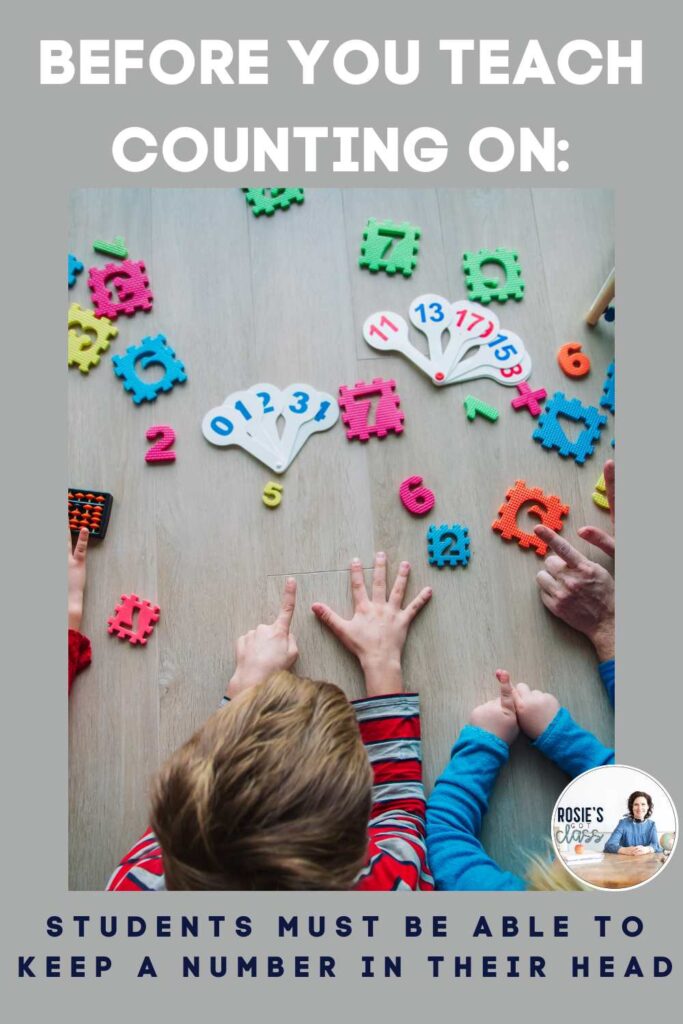
Show Your Students How the Counting On Addition Strategy Saves Time
One effective way to introduce this is by comparing two methods. You can show students how they might add numbers by counting each item individually (which I like to call the “takes forever way”). I really emphasize that it is taking so much time! Then I compare it with the faster method of keeping the larger number in their head and counting on from there. This clear distinction helps students see the advantage of the counting on strategy and motivates them to practice it.
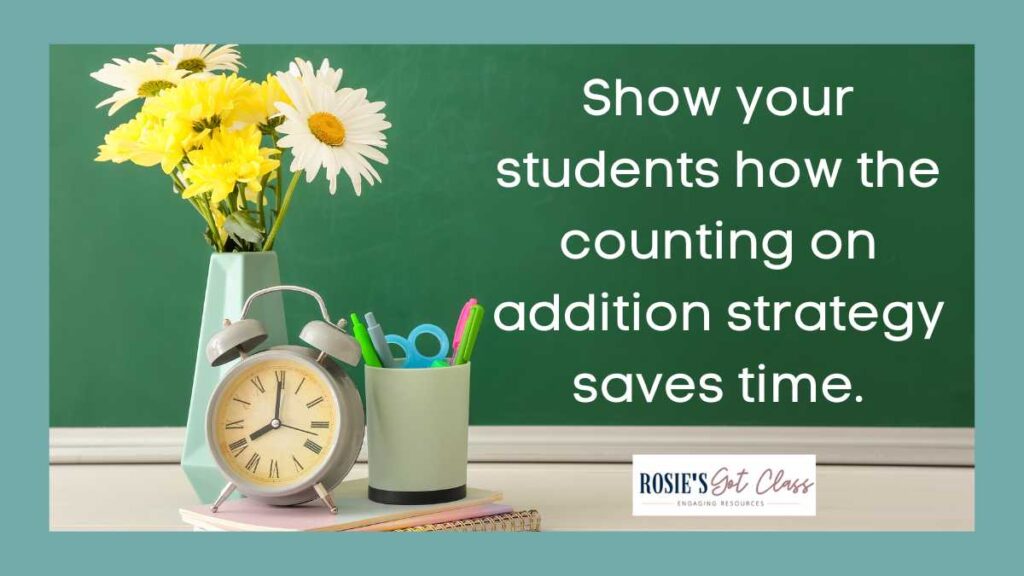
For example, if you ask a student to solve 5 + 3, some may start counting from 1: “1, 2, 3, 4, 5, 6, 7, 8.” This method is accurate but slow. You can teach them to start at 5 and then count on: “6, 7, 8.” By emphasizing how much faster and easier it is to start with the larger number and count on, you’ll help them build confidence in using this strategy.
The Commutative Property of Addition Helps with the Counting On Addition Strategy
A critical part of mastering the counting on strategy is understanding the commutative property of addition. This property tells us that no matter the order in which numbers are added the sum remains the same. This is particularly useful for counting on because students don’t need to start with the first number in the equation, especially if it’s smaller.
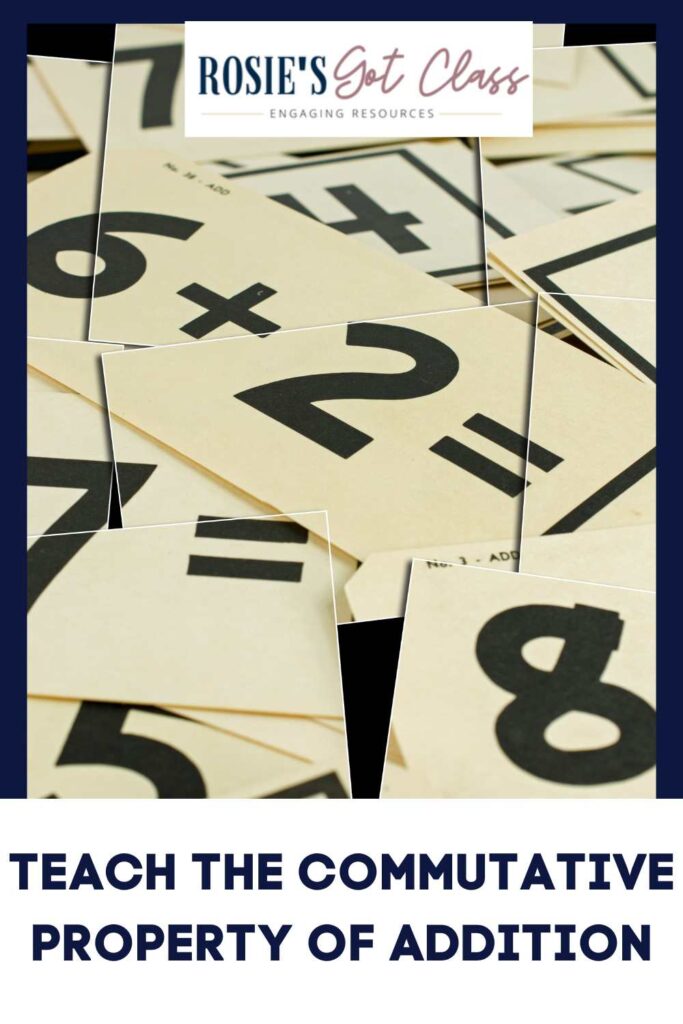
For example, when solving 3 + 8, students may want to begin with 3 and count on which can be more challenging. However, by applying the commutative property, they can rearrange the problem in their minds and begin with 8, then count on: ” 9, 10, 11.” Teaching this property early on ensures students understand they can always start with the larger number which simplifies the process.
Use Concrete Methods to Teach Counting On Addition Strategy
Introducing the counting on strategy can be done in a variety of ways, but one of the most effective approaches is to move from concrete to representational to abstract. This is also called the CRA method. Here’s how you can scaffold the learning process using manipulatives, models, and written equations.
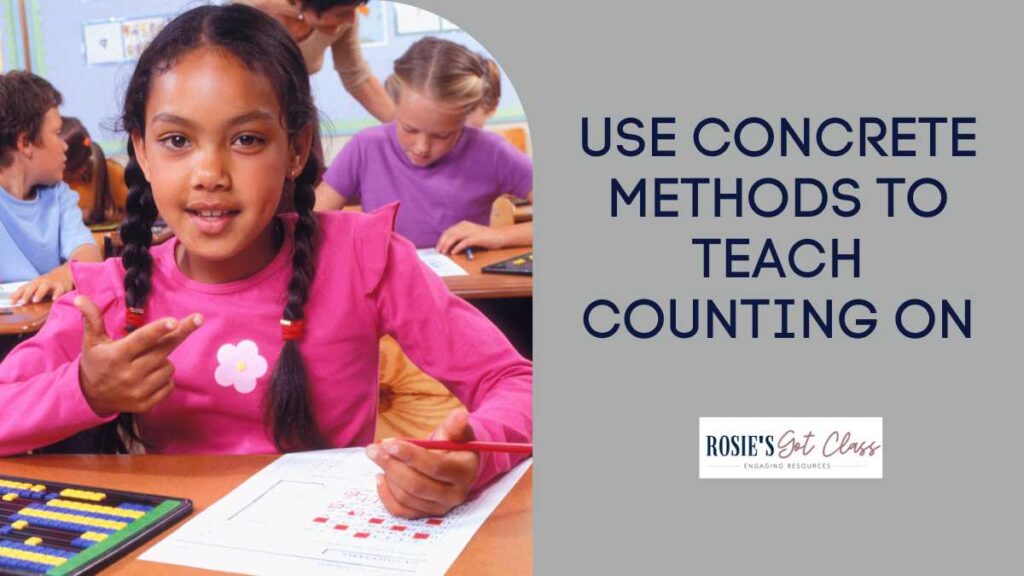
Concrete: Use Manipulatives to Demonstrate Counting On
Begin with concrete objects like counters, cubes, or ten frames. These tools help students physically manipulate numbers and give them a tangible way to practice counting on. Start with an equation like 6 + 4. Give the student six counters to place in a ten frame and then ask them to count on four more. This hands-on experience makes it clear how they can hold one number (6) in their head and add on to it without needing to start from 1 each time.
Manipulatives for counting on games can also make learning fun and engaging. For example, students might roll a die and then “count on” from the number they rolled by adding another number with counters or small objects. These types of activities reinforce the strategy in a understandable way.
Representational: Drawing it Out to Count On
Once students are comfortable using manipulatives, you can transition to drawings. A common tool is the number line. Show students how to start at the first number and “hop” forward to add on to the second number. For instance, in the equation 7 + 2, you would start at 7 on the number line and then hop forward twice: “8, 9.” Drawing number lines or using pre-made number lines help students visualize the process.
You can also have students represent addition by drawing objects. For example, ask them to draw seven circles, then two more, and show how they start counting from 7 and add on because they know they already drew 7 circles.
Abstract: Writing the Equation to Show Counting On
Once students are confident with the counting on strategy through concrete and representational methods, it’s time to move to abstract thinking by writing out equations. Encourage students to write the equations with the answer. As they practice more, they’ll naturally rely less on manipulatives or drawings and more on mental math.
To reinforce this step, you can use counting on worksheets that present a mix of written equations and visual aids like number lines or ten frames. Worksheets with visuals can provide valuable practice.
Incorporate Counting On in Daily Practice
Counting on can be practiced in a variety of ways including daily routines to practice the skill. Many students naturally use their fingers to count. We eventually want them to transition to mental math but allowing them to count on with their fingers is a strategy for young learners. With time, they’ll develop the confidence and number sense to move away from using their fingers as they build their mental math skills.
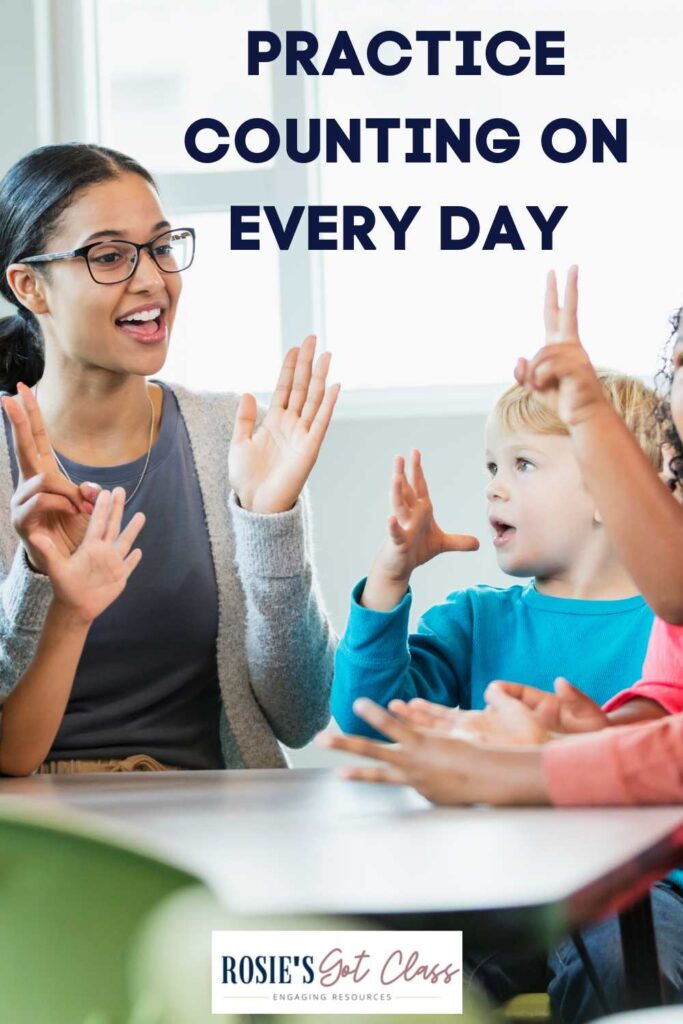
You can also introduce counting on games in the classroom such as board games where students must add numbers to advance, or dice games where they roll and count on to find the sum.
A Key Mental Math Trick: Counting On
The counting on addition strategy is more than just a way to make addition faster. It helps students develop crucial number sense and lays the foundation for more advanced math concepts. By teaching students how to hold a number in their head, understand the commutative property, and use concrete tools to visualize the process, you’ll help them be successful mathematicians.

Here are some other articles you might find helpful.
Ways to Teach the Counting On Strategy
Help Students Master Math Facts with the Counting On Strategy


